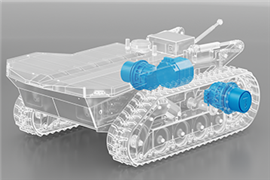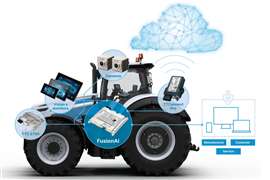Doosan adds road builders to forestry equipment catalog
21 May 2021
Forestry-tough excavators are often first machine at a logging site.
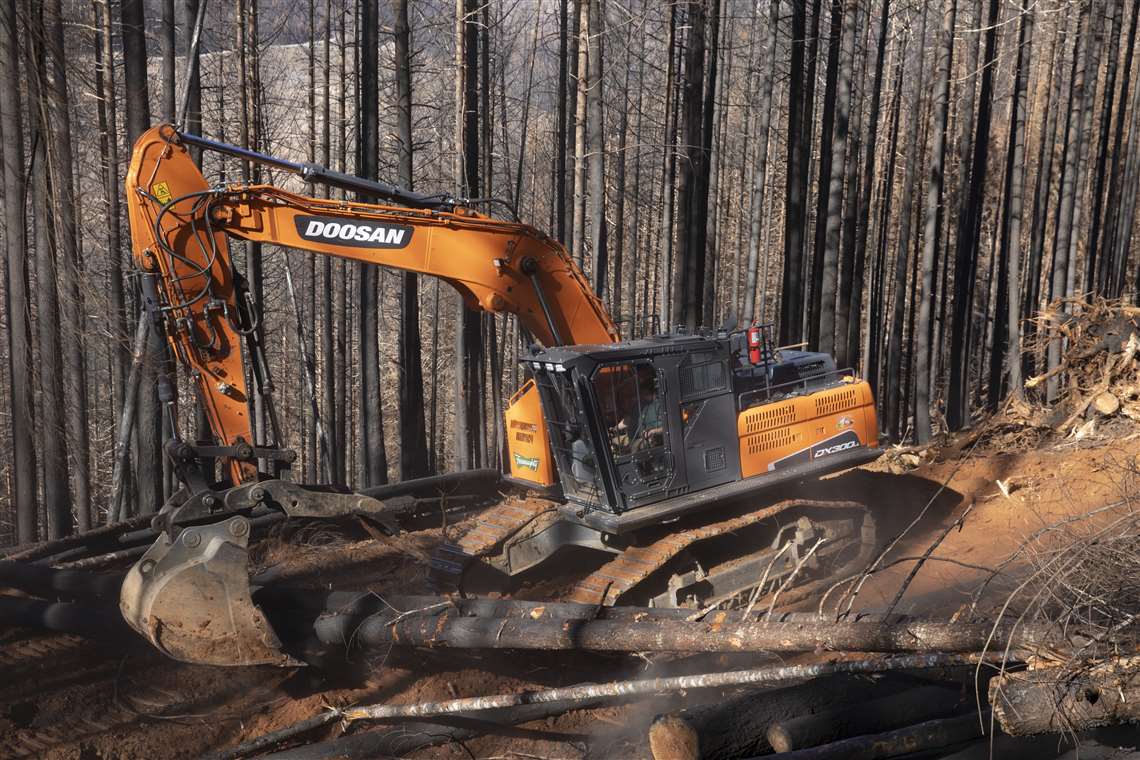 The Doosan DX300LL road builder.
The Doosan DX300LL road builder.
Doosan Infracore North America LLC has added two new road builders to its forestry product offering. The new DX300LL-5 and DX380LL-5 road builder complement the current DX225LL-5 model.
A blend of log loader and excavator, the road builder is often the first machine at a logging site, where it is used to open access roads for other forestry equipment. “The main application is to pioneer a tract of land,” said Aaron Kleingartner, product and dealer marketing manager, Doosan Infracore, Suwanee, Ga. “When pioneering, a crew will go into a forest tract that needs to be harvested and prepare it. A road typically needs to be built, and so that’s where the term ‘road builder’ comes from.
“Typically, a crew will fell a group of trees by hand and then this machine will come in and move those trees to where they can be moved by a skidder. Then the crew will use the road builder to pull stumps out and prepare the road bed to allow trucks and other equipment to get access into the forest tract.
“Road builders work in a very tough, rugged environment. The high and wide undercarriage of the machines allow them to traverse stumps very easily, while the front work group is used to grade the roadway.”
The High-Walker undercarriage, borrowed from the Doosan log loader, get durable top rollers and special cleanout brackets while the tracks have heavy-duty links with double grouser shoes and full-length track guiding guards. Standard rock guards protect the tracks from debris, said the company, and a front guard further protects components.
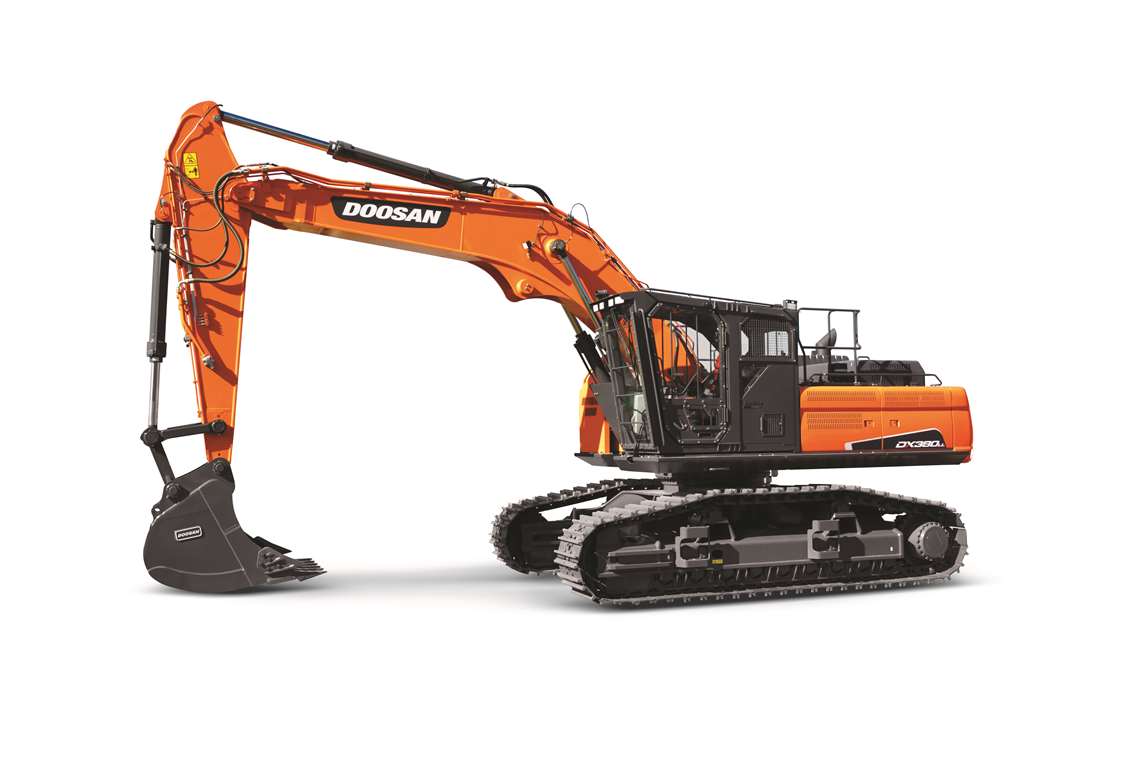 The Doosan DX380LL-5 road builder is powered by a Scania DC09 diesel engine rated 318 hp.
The Doosan DX380LL-5 road builder is powered by a Scania DC09 diesel engine rated 318 hp.
The new models are versions of the company’s DX300LL-5 and DX380LL-5 log loaders that are equipped with a package designed for road-building tasks. They combine a log loader mainframe with an excavator boom and arm configuration.
“The way road builder machines are configured is that our log loader basically has two options: the front work group and a cab riser,” said Kleingartner. “The road builder starts as a conventional forestry machine and the undercarriage and the house are mated together. At that point, a decision must made: it is a log loader or a road builder? The log loader will get a cab riser and a grapple for loading logs, while the road builder gets a traditional cab and an excavator front.”
Operators can pick from a standard excavator cab or an optional forestry cab; the company said a standard excavator cab simplifies machine transport due to its lower height. Extra cab guarding is also available to further protect the machine.
Traditional excavator attachments such as the hydraulic quick coupler, thumb and heavy-duty bucket are available for the new road builders; Kleingartner said a bucket is the most popular.
While a conventional excavator could be used to open a path through a tract of timber land, Kleingartner said the biggest benefits of the road builder configuration is that the rugged undercarriage design makes for a more stable machine due to its width and the “additional ground clearance is definitely needed when traversing stumps and other debris in in the forest.”
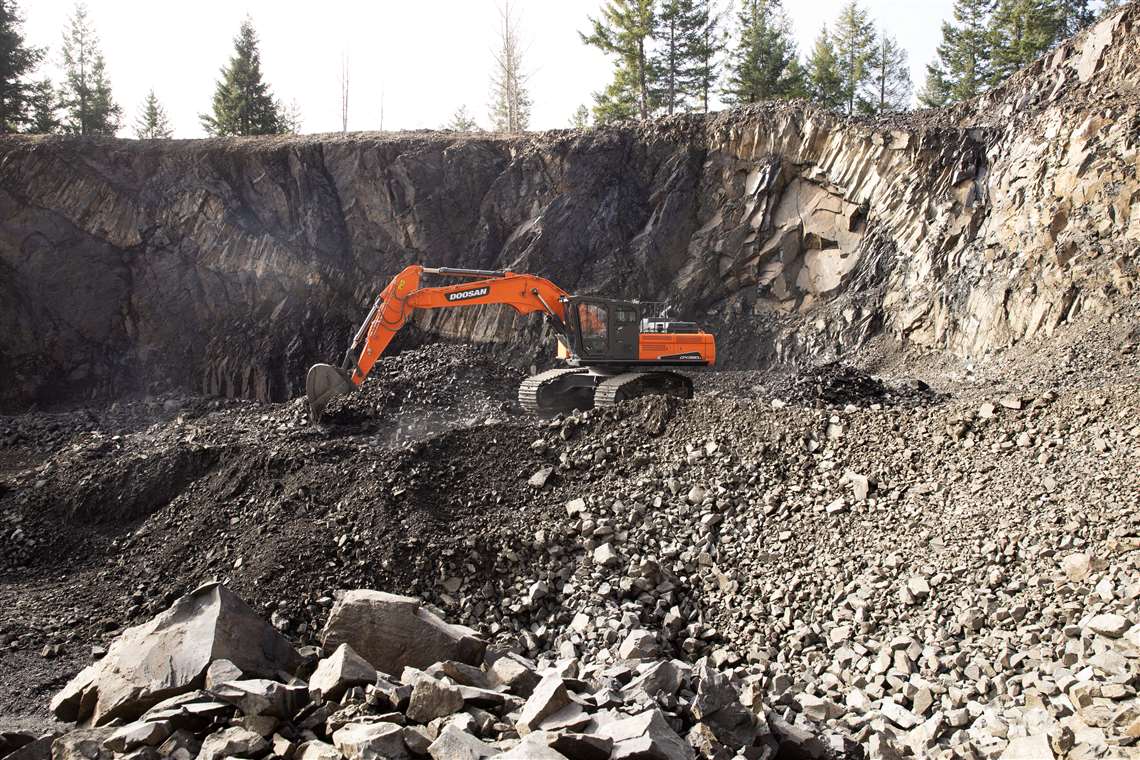 Although designed primarily for forestry work, the unique features of a road builder lend themselves well to quarry and demolition applications.
Although designed primarily for forestry work, the unique features of a road builder lend themselves well to quarry and demolition applications.
The design of the machine also lends itself to single-story building demolition or quarry applications, for which it could be configured with a breaker or shear. “Oftentimes in those applications you’re working in tight areas where there’s debris that you need to maneuver around. The additional ground clearance is beneficial on a job site where you’re trying to get from one side of a demolished building to the other.”
The new DX300LL-5 road builder has an operating weight of 80,910 lb. Its maximum dig depth of 23 ft. and 65.5 gpm of auxiliary hydraulic flow is powered by a Scania DC09 diesel engine rated 271 hp. The larger DX380LL-5 road builder has an operating weight of 106,483 lb. and is powered by a Scania DC09 diesel engine rated 318 hp. It has an auxiliary hydraulic flow of 95.1 gpm and a maximum dig depth of 23 ft. 6 in.
The third Doosan road builder, the smaller DX225LL-5, gets a Doosan DL06P diesel engine rated 166 hp.
Customers can monitor their equipment with DoosanCONNECT® Telematics. Even in remote locations the machine’s location and health are accounted for with satellite device communication, said the company. In addition, Doosan dealers can monitor their customers’ machines and respond to parts and service needs.
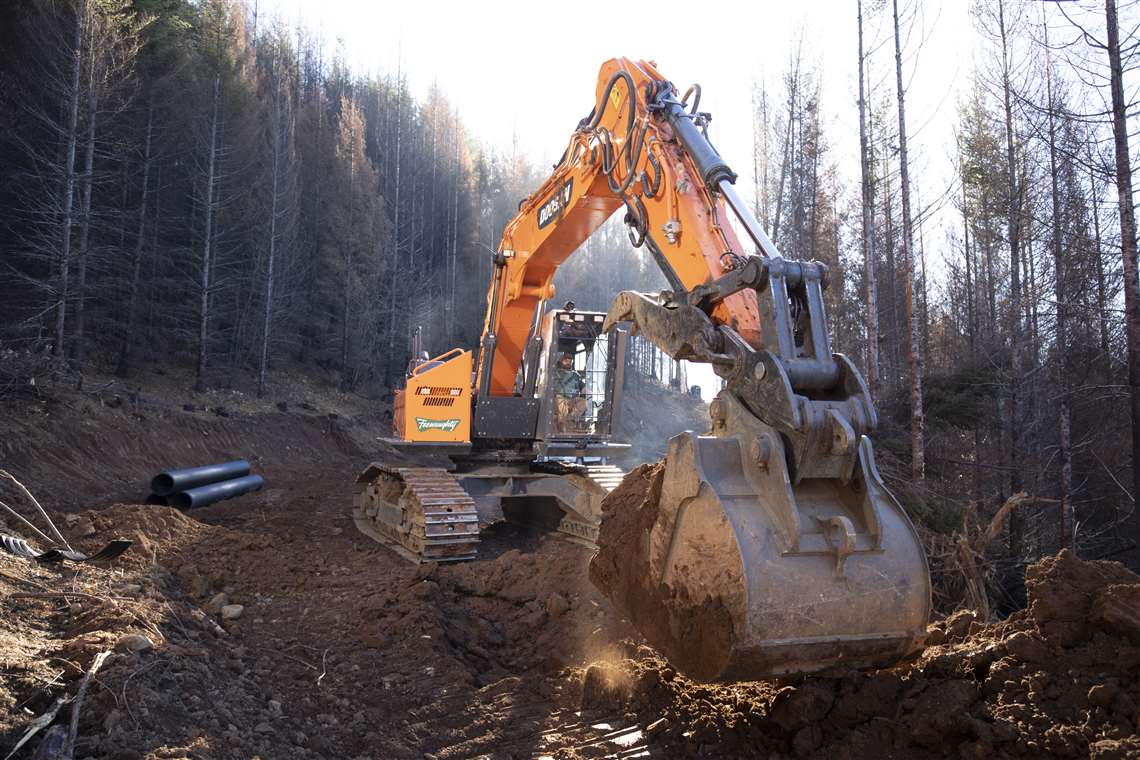 Road builders, such as this Doosan DX300LL-5, are a blend of log loader and excavator and are often the first machine at a logging site.
Road builders, such as this Doosan DX300LL-5, are a blend of log loader and excavator and are often the first machine at a logging site.
Doing the work
Logging is an agricultural enterprise, one with a 25- to 40-year crop cycle versus an annual rotation for traditional crops. As with a corn and soybean operation in the Midwest, the size of the organization doing the work can vary. There are small family run logging businesses, which often do much of their own work, as well as large business groups that outsource certain aspects of the logging process.
“Typically, however, the road building part of pioneering a tract of land is done by a separate contractor,” said Kleingartner. “Once the roads are built into a tract of land, the road work is complete and the operation can move into the harvesting process.
“Some of the larger landowners in the Pacific Northwest have multiple tracks of land that they’ll harvest more often. When they return to a tract after a few years they need to do some prep work on an existing roadway, so some larger logging businesses may have several road builders in their fleet.”
The company said those customers can handle the tasks needed on a forestry access site with a complete product offering from Doosan.
“Operators tend to stick to a certain brand of equipment,” said Kleingartner. “For Doosan, it’s very beneficial to have these road builder options in our suite for those contractors. Their fleet will often include log loaders and a traditional excavator or wheel loader. For those operations, it is good to be able to go to one dealership and find multiple equipment options.”
Written by Chad Elmore, this article originally appeared in the May 2021 issue of Diesel Progress.
POWER SOURCING GUIDE
The trusted reference and buyer’s guide for 83 years
The original “desktop search engine,” guiding nearly 10,000 users in more than 90 countries it is the primary reference for specifications and details on all the components that go into engine systems.
Visit Now
STAY CONNECTED




Receive the information you need when you need it through our world-leading magazines, newsletters and daily briefings.
CONNECT WITH THE TEAM











